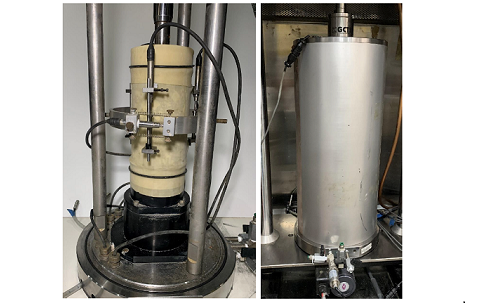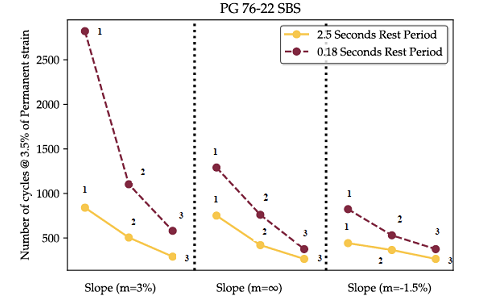Impact of Automated and Connected Trucks (Platoons) on Pavement Deterioration Mechanisms
Contact: Hasan Ozer and Ashraf Alrajhi
Researchers: Ashraf Alrajhi
Sponsor: United States Department of Transportation’s (USDOT’s) University
Transportation Center at the University of Michigan for the Center for Connected and
Automated Transportation (CCAT) through Illinois Center for Transportation (ICT) at the
University of Illinois at Urbana-Champaign.
Timeline: July 2020 – July 2023
Infrastructure Considerations in Response to the Automation in the Trucking Industry
Automation technology offers numerous advantages to the trucking industry in terms of fuel savings, operational efficiencies and preventing fatal crashes.
Despite the numerous advantages of truck platooning enabled by connectivity and automated driving systems, there are concerns regarding its impact on pavement performance due to expected channelized traffic and reduced spacing between trucks within the platoon.
Truck Spacing as a Key Variable of Platoons and Pavement Permanent Deformations
Truck spacing is one of the key parameters of a truck platoon that can be optimized to balance fuel savings and impact to the pavements. Rest period defining the duration between the loading applications from two consecutive trucks can impact permanent deformations and fatigue cracking in asphalt pavements.
Main challenge with this new type of loading scenario is the uncertainty of the stress state configurations that may be generated during the loading phase of the platoons.
Dynamic and Muti-Dimensional Triaxial Testing to Simulate Platoon Stress Pulses
A custom designed dynamic triaxial system was developed to simulate complex and repetitive stress pulse configurations. The system is capable of independently applying static and dynamic axial and confining pressure with various pulse configurations to simulate moving load (compression – shear – extension stresses) in one loading cycle.
Quantifying the Impact of Rest Period on Conventional Asphalt Mixes
Dense graded and stone-matrix asphalt mixes with various binder grades were used. The binders were selected to represent diverse climatic conditions.
The increase in the rest period consistently increased the permanent deformations by almost 2 to 3 times higher under different stress paths. The significance of rest period as a testing variable along with stress state and temperature in repeated load permanent deformation experiments is evident.

Figure 1: Multi-dimensional dynamic triaxial system

Figure 2